 W
WA stable is a building in which livestock, especially horses, are kept. It most commonly means a building that is divided into separate stalls for individual animals and livestock. There are many different types of stables in use today; the American-style barn, for instance, is a large barn with a door at each end and individual stalls inside or free-standing stables with top and bottom-opening doors. The term "stable" is also used to describe a group of animals kept by one owner, regardless of housing or location.
 W
WBelwade Farm is a horse stables near Aboyne, Scotland owned by World Horse Welfare.
 W
WThe Big Stable Newmarket is a heritage-listed former Aboriginal land, farm stables, residence, hotel, factory and detention centre and now stables at 29-39 Young Street in the Sydney suburb of Randwick in the City of Randwick local government area of New South Wales, Australia. It is also known as Cranbrook Stables;. It was added to the New South Wales State Heritage Register on 2 April 1999.
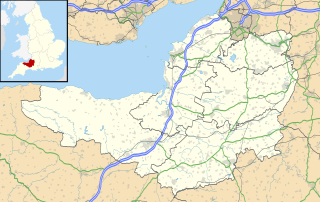 W
WBrockley Hall Stables is a 0.065 hectare biological Site of Special Scientific Interest near the village of Brockley, North Somerset, England notified in 1987.
 W
WThe Chapel of St Michael more popularly known in Maltese as Il-Kappella tas-San Ċir or Il-Kappella ta' San Mikiel is Sanċir is a medieval chapel located in the limits of Rabat, Malta in an area referred to as Ġnien is-Sultan.
 W
WThe Chapel of the Annunciation is a Medieval Roman Catholic church located in Ħal-Millieri, limits of Żurrieq, Malta.
 W
WThe French Château de Chaumont-la-Guiche [or -Laguiche], located in Saint-Bonnet-de-Joux (Saône-et-Loire), in a region formerly known as Charolais in southern Burgundy, was constructed beginning in 1500 for the La Guiche family. The most famous feature of the château is the monumental 17th-century stable block, designed by the noted French architect, François Blondel.
 W
WThe Chingford Stables are located in North East Valley, Dunedin, New Zealand. The stables are now used for both private and public functions, and listed as a Category I Historic Place.
 W
WGannon House is a heritage-listed retail building at 45-47 Argyle Street in the inner-city Sydney suburb of The Rocks in the City of Sydney local government area of New South Wales, Australia. It was designed by Michael Gannon and built from 1839 to 1840 by Michael Gannon as residential houses and stables. It is also known as Michael Gannon's House. As of 2019, it contains a Gannon House Gallery and La Renaissance Patisserie. The property is owned by Property NSW, an agency of the Government of New South Wales. It was added to the New South Wales State Heritage Register on 10 May 2002.
 W
WThe Corradino Batteries were a series of artillery batteries on Corradino Heights, near Paola, Malta, that were built by Maltese insurgents during the French blockade of 1798–1800. The batteries formed part of a chain of batteries, redoubts and entrenchments encircling the French positions in Marsamxett and the Grand Harbour.
 W
WThe Griffintown Horse Palace is a stable in the Griffintown district in Montreal, Quebec, Canada, which dates back to around 1860. For three decades, the stables were run by former Goose Village resident, iceman and calèche driver Leo Leonard, also known locally as Clawhammer Jack. Leonard, who was reported to be the last Irish Quebecer left in Griffintown, retired and moved to Nun's Island in 2011. The sale of his land around his Ottawa Street residence has cast the future of the stables in doubt. Leo and his stables are featured in an episode of Weird Houses. Montreal landscape architect Juliette Patterson has formed a foundation in an attempt to save the Horse Palace, which has also drawn support from the area's historic Irish community.
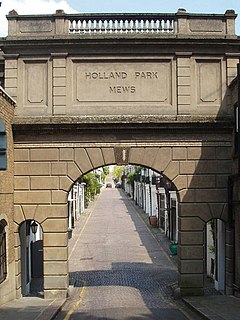 W
WHolland Park Mews is a mews street in the Holland Park district of the Royal Borough of Kensington and Chelsea in London, W11. The mews consists of 67 residential properties, originally built as 68 stables, on a cobbled road with two entrances from Holland Park. The west entrance passes under an arch listed Grade II on the National Heritage List for England. The arch was built in 1862, and the stables from 1860 to 1879.
 W
WThe Horse Palace is a heritage building at Exhibition Place in Toronto, Ontario, Canada, containing stables, a horse ring and various agencies. It was constructed to support the equestrian events of the Royal Agricultural Winter Fair. The ornamentation of the building is considered a fine example of Art Deco. It is a listed heritage building.
 W
WHyde Park Gardens Mews is a mews street in the Bayswater area of London, W2. The mews consists of 46 residential properties, originally built as stables for Hyde Park Gardens, on a cobbled road with two entrances. The west entrance passes under an archway. The mews is entered by Clarendon Place at the west and Stanhope Terrace to the east. Sussex Place bisects the mews in the middle.
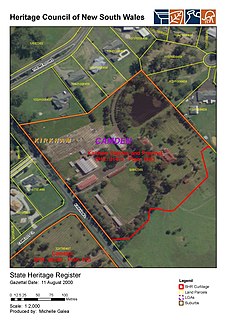 W
WKirkham Stables is a heritage-listed former horse stud and dairy and now vacant building and beef cattle farm at Kirkham Lane in the south-western Sydney suburb of Narellan in the Camden Council local government area of New South Wales, Australia. It was built from 1816 by John Oxley. It is also known as Kirkham Stables and Precinct. The property is privately owned. It was added to the New South Wales State Heritage Register on 11 August 2000.
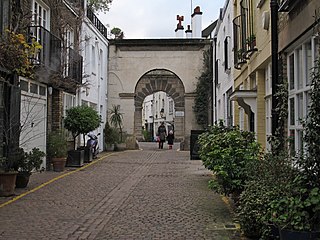 W
WKynance Mews is a mews street in South Kensington district of the Royal Borough of Kensington and Chelsea in London, SW7. The mews consists of 33 residential properties on a setted road that passes from Gloucester Road on the east, before being bisected by Launceston Place, with the western end of the mews ending in a cul-de-sac. The entrances to the mews pass through three arches, each listed Grade II on the National Heritage List for England. The arches were built c. 1860 to a design by Thomas Cundy III.
 W
WThe Living Museum of the Horse is a museum in Chantilly, France dedicated to equine art and culture. It is housed in the Great Stables of the Château de Chantilly, about 40 km (25 mi) north of Paris.
 W
WMews is a British name for a row or courtyard of stables and carriage houses with living quarters above them, built behind large city houses before motor vehicles replaced horses in the early twentieth century. Mews are usually located in desirable residential areas having been built to cater for the horses, coachmen and stable-servants of prosperous residents.
 W
WThe Neuer Marstall is a listed historic building in Berlin, Germany located on the Schloßplatz and the Spree River. Completed in 1901 and facing the former Royal Palace, the neo-Baroque "New Stables" once sheltered the Royal equerry, horses and carriages of Imperial Germany. The complex also included three enclosed courtyards, a riding school, and the Knights College.
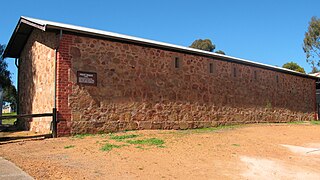 W
WThe Newcastle Police Stables on Clinton Street in Toodyay, Western Australia were constructed in 1891 and replaced the original timber stables erected on this site in 1860, which were destroyed by fire.
 W
WThe Old Livery Stable in Fountain, Colorado is a historic stable which was built in 1893 as part of a small hotel complex. It housed horses of hotel guests. With the rise of automobiles such use ended and the stable decayed. The hotel was damaged in a fire in the 1940s, then partially repaired to serve as a rooming house, then demolished to make way for new buildings; only the stable remains.
 W
WPeover Hall Stable Block is in the grounds of Peover Hall, Cheshire, England. It is recorded in the National Heritage List for England as a designated Grade I listed building.
 W
WThe Royal Stables is the mews of the Danish Monarchy which provides the ceremonial transport for the Danish Royal Family during state events and festive occasions. The Royal Stables are located at Christiansborg Palace on the island of Slotsholmen in central Copenhagen, Denmark. In 1789, the number of horses reached a peak with 270 horses stabled. Nowadays, there are about 20 horses in the Royal Stables.
 W
WThe Royal Stables is the mews of the Swedish Monarchy which provides both the ceremonial transport for the Swedish Royal Family during state events and festive occasions and their everyday transportation capacity. The Royal Stables date from 1535, and were originally built on Helgeandsholmen, close to Stockholm Palace. The Royal Stables are today located just behind Strandvägen in Östermalm in central Stockholm, Sweden. The head of the Royal Stables is the Crown Equerry.
 W
WRoyal Stables are a set of stables in Córdoba, Spain. The building is situated in the historic centre and borders the Guadalquivir. The stables housed the best stallions and mares of the royal stud breed Andalusian horse.
 W
WSolomon's Stables is an underground vaulted space now used as a Muslim prayer hall by the name of El-Marwani Mosque, some 600 square yards in area, at the bottom of stairs which lead down from the al-Aqsa Mosque, under the Temple Mount, to the base of the southern wall of the Temple Mount in Jerusalem. Solomon's Stables are located under the southeastern corner of the Temple Mount, 12.5 m (41 ft) below the courtyard, and feature twelve rows of pillars and arches. In December 1996 the Waqf converted the area into a prayer hall by adding lights and floor tiles, and renamed it the El-Marwani Prayer Hall.
 W
WThe Sydney Conservatorium of Music is a heritage-listed music school in Macquarie Street, Sydney, New South Wales, Australia. It is one of the oldest and most prestigious music schools in Australia. Located adjacent to the Royal Botanic Gardens on the eastern fringe of the Sydney central business district, the Conservatorium is a faculty of the University of Sydney, and incorporates the community-based Conservatorium Open Academy and the Conservatorium High School. In addition to its secondary, undergraduate, post-graduate and community education teaching and learning functions, the Conservatorium undertakes research in various fields of music. The building was added to the New South Wales State Heritage Register on 14 January 2011.
 W
WThe Grange is a heritage-listed former stables and now residence at Renwick Street, Wyoming, Central Coast, New South Wales, Australia. It was designed by John Verge. It was added to the New South Wales State Heritage Register on 2 April 1999.
 W
WVilla Francia, initially named as Palazzo Francia, then named as Villa Preziosi, and officially known as Palazzo Francia and Francia Estate, is an 18th-century palace in Lija, Malta. The palace was built circa 1757, by Francesco Preziosi, with baroque architecture that gave a sense of pride and power to noble people at the time. The first ambitious owner became bankrupt with the expenses of the palace, to make it an outstanding building and incomparable with others, and because of this he was pressured to sell his possession by the Order of St. John to pay his accumulated debts.
 W
WWarbys Barn and Stables is a heritage-listed former barns and now commercial building at 14 - 20 Queen Street, Campbelltown in the City of Campbelltown local government area of New South Wales, Australia. It was designed by John Warby and built in 1816. It is also known as Warbys Barn and Warbys Stables, The Leumeah Barn, Leumeah Barn Restaurant and Campbelltown Motor Inn. It was added to the New South Wales State Heritage Register on 2 April 1999.
 W
WWillington Dovecote & Stables is a National Trust property located in Willington, near Bedford, Bedfordshire, England. Both buildings are Grade I listed.